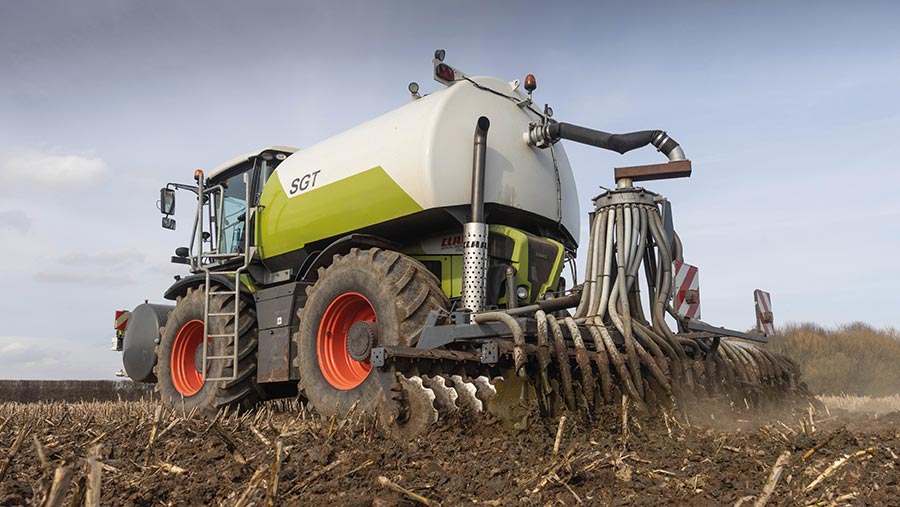New tech boosts slurry nutrition to improve crop performance
 © Tim Scrivener
© Tim Scrivener A novel development that uses air and electricity to boost the nitrogen content of slurry and digestate could help farmers reduce nutrient losses and improve crop performance.
Developed by Norwegian agrotech firm N2 Applied, the scaleable on-farm process aims to create an efficient and sustainable fertiliser that reduces reliance on artificial inputs and improves accuracy of slurry applications.
In fact, trial data from international testing sites revealed that a winter wheat crop treated with N2 dairy slurry outperformed characteristics of ammonium nitrate-based fertilisers, with greater levels of nitrogen available to the crop.
See also: Soil carbon: Targets and how to store it in arable fields
At a time when fertiliser prices have soared to all-time highs and growers are actively looking to improve soil health, manures offer a natural way to increase organic matter levels and provide crops with a range of valuable nutrients, while trimming back on costs.
Improving digestate
The novel technology also proves effective at improving the nutrition content of digestate produced from anaerobic digestion plants.
During the process digestate becomes considerably more stable and its nitrogen content doubles, while reducing losses through methane and ammonia emissions.
However, the uniformity of muck can be a challenge to deal with, as nitrogen content varies considerably and losses to the environment can be significant.
Using the scientific technique that applies just air and electricity to slurry, the N2 process enriches liquid manure through a plasma conversion process that “locks in” nitrogen from the air.
This, in turn, increases the nitrogen content of slurry and provides crops with a greater level of plant-available nitrogen, while also reducing both methane and ammonia emissions.
The result is a nitrogen-enriched manure, which has the same characteristics as normal slurry, but can be used more precisely and delivers a significantly improved environmental footprint.
The tech units are powered by electricity, with most of that energy consumed by the plasma torch that is central to the conversion process.
Trial data
In a winter wheat crop assessment run by Oxford Agricultural Trials in Goole, East Yorkshire, the wheat crop treated with nutrient-enriched manure was found to use the equivalent of 85% of the crop-available nitrogen applied to the fields via that of N2 Applied.
This was 27% higher than in the crop treated with ammonium nitrate, which used the equivalent of 58% of crop-available nitrogen, while the untreated dairy slurry used 53%.
Carl Hansson, chief executive officer of the firm, explains that these results are a dramatic breakthrough for food production.
“This technology has the potential to vastly diminish farmers’ reliance on chemical fertilisers, at a time when the cost of them has become crippling for some and the war in Ukraine has restricted supply,” he says.
About the company
N2 Applied is a Norwegian technology company with expertise in areas such as agriculture, technical engineering, business development and sustainability.
Based in Oslo, the firm has test centres in York, Norway and the Netherlands.
To assess the potential of N2 Unit’s technology effectively, annual field trials were carried out over the past five years by independent, established research partners in diverse locations with a wide range of soil and climatic conditions.
The company also worked with independent test sites in Denmark, Norway and the UK to assess methane and ammonia emissions from treated slurry.
This year they looked more closely at grassland yields.

